We recently returned from Morocco where we successfully climbed the 4,167 metre high Mount Toubkal. If you book via a reputable tour operator in the UK, it is probable that you will receive full training information and a kit list. However, you can save a lot of money if you book with a local operator. The downside is that the pre departure information you receive from a local tour operator may be scarce. They do not seem to provide any information about the difficulty of the climb. Nor, do they provide detailed kit information. So we have outlined what kit we think you need for a summer ascent of Mount Toubkal (technically from June to September). That way, you can save money and be fully prepared.
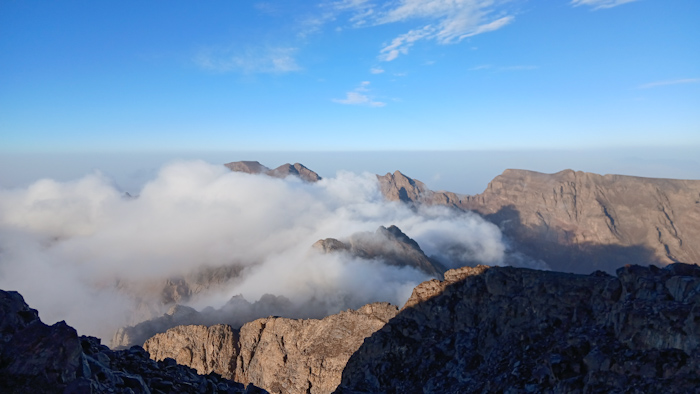
Summer ascent of Mount Toubkal
Before you commit to this trip, read ‘How hard is it really to climb Mount Toubkal in 2 days?’ blog which gives you some insight into what to expect.
If you then want to go ahead and book, we booked our tour through Get Your Guide. Feel free to take a look at the options below.

Kit for your Mount Toubkal trip
Mount Toubkal is a challenging trek which can be made more comfortable with good quality kit. Whilst you can hire some kit in Morocco, if you take your own stuff you will be more familiar with it which removes some of the stress on the mountain.
For ease, I will outline which items are optional or mandatory and whether you can hire them locally or not.
Equipment
Poles
Poles are optional (women seem to favour them more but both sexes can benefit from the use of poles on Mount Toubkal). They are not available to hire locally (to my knowledge) although there are plenty of hiking shops in the Atlas Mountains where you may be able to buy them.
I personally think that poles are essential to help on the inclines. You can use them to pull yourself up some of the bigger slabs but they also offer significant support for your knees on the descent.
Another benefit of poles is for anyone who feels the impact of altitude in the form of dizziness. I experienced much dizziness throughout the entire 2 day summer ascent of Mount Toubkal. There were many times when I felt like I had limited balance and the poles gave me more confidence when navigating between different levels. You never know, they just might save your life!
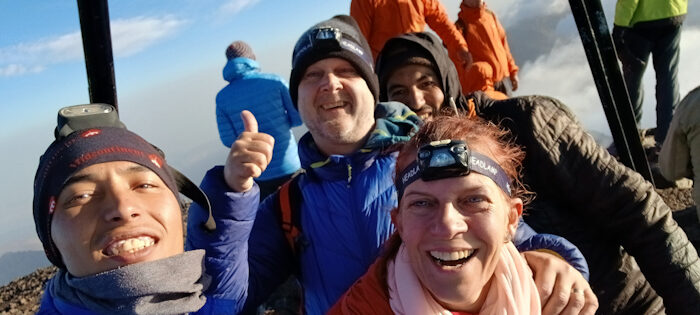
Head torch
Head torches are mandatory as you will start your final summit push well before dawn. You can hire them locally for a few £ for the 2 days or you can buy cheap torches from Amazon.
If you plan to do several challenges like this, it makes much more sense to buy your own. You will be more familiar with the usage, which means one less thing to worry about during your climb.
We use the Lepro Head torch which is rechargeable and adjustable. These cost just £14.99 from Amazon.
Sleeping bag
A sleeping bag is optional in summer but if you really want one you can hire them locally. We climbed at the end of September and most people did not bother with a sleeping bag, although we did.
Instead, the refuge provided bulky blankets for climbers. Personally, I would much rather have the comfort of my own personal clean sleeping bag.
I use the Keenflex mummy sleeping bag which is suitable for temperatures to minus 5. It rolls neatly into its own bag and is seriously warm. I took this bag into the Himalayas in October and was roasting in it.
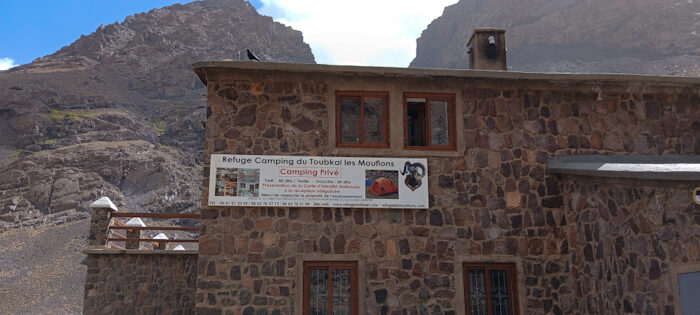
Day pack
It is essential to bring a good quality day pack that has straps across your chest and stomach as this will help to disperse the weight. Given you may may need to carry snacks, up to 2 litres of water, waterproofs, extra layers, gloves and hats, the weight can add up.
When you are already exhausted, that extra weight saps your energy but a good pack can make all the difference.
I have a Mountain Warehouse Endeavour bag and love this pack. It has several pockets for batteries, phones and hand sanitiser including two waist belt pockets for items you need easy access to.
It is surprisingly comfortable to wear and feels nice and light due to the design which spreads the weight evenly across your back.
Hydration system
During the summer months, daytime temperatures at the summit can be between 10°C and 20°C while nights may drop to freezing. However from November to April, temperatures can plummet to daytime highs of 0°C and night time temperatures below freezing.
When you climb will have a significant impact on which hydration system you select. During a summer ascent you can opt for a water bladder or bottles but in winter it is more likely that a water bladder might freeze. Water bottles may be a more practical option during those months.
Water bladder
My preference is to take a water bladder as it is easy to take regular sips without the constant need to remove and repack water bottles.
I use the Osprey Camelbak which has a detachable strap to aid cleaning. The water valve turns on and off and it can hold up to 2.5 litres of water.
Note, no instructions come with the water pack so do get it out before your trip. Practice setting it up, filling and installing it as you do not have tons of time to get ready on summit day.
I am a massive fan of the water bladder just because of the ease of use on the mountain when you are tired and potentially wearing tons of bulky layers.
Buy your Osprey Camelbak here.
Water bottles
I love the Degbit water bottles as they come in a variety of colours and have a carry strap and filter inside the top. They can also help you to stay hydrated with useful reminders on the bottle.
Sanitary items
Tissue paper and hand sanitizer
These items are entirely optional and not available to hire for obvious reasons!! However given that Western toilets are in scant supply on the mountain, I strongly recommend that you take extra hygiene precautions to avoid sickness and diarrhoea.
Hand sanitizer is useful to clean your hands before you eat but equally for bathroom visits. You should aim to use plentifully as I know from personal experience that picking up a bug on a mountain is no fun.
Toilet paper
For the same reason, it pays to take your own toilet paper. Although there are Western toilets in the refuge and squat toilets on the trek path up to the refuge, these rarely provide toilet paper.
You should therefore bring your own although you can buy supplies at the refuge. We actually packed up packets of tissues which we could squeeze comfortably into the small pockets of our day pack. See the comment below about dry bags which we used for this purpose.

Clothing
Hiking boots
Under no circumstances should you attempt this climb without properly worn in hiking boots. Not only do you need footwear that is waterproof but it is essential that they support your ankles and lower limbs.
Due to the nature of the stones and pebbles underfoot, it would be all too easy to sprain an ankle on Toubkal. Having good footwear is essential protection against this possibility as evacuation from the mountain will be on a mule or on foot.
If you do not already have a pair of hiking boots that you know are comfortable, it is important to allow yourself time to find a pair of shoes to suit you. I love my Salomon boots but it took me 3 attempts to find a pair of boots that did not leave me in agony.
My hiking boots are definitely waterproof and look gorgeous.
Flipflops
Flip flops or comfortable shoes for the refuge is an essential. After walking hours in your boots with hot and sweaty feet this will be a welcome relief.
Waterproof jacket
We experienced torrential rain on both days of our trek. Not having wet weather kit would make for a miserable walk and we definitely saw lots of people do the trek without appropriate clothing. You should not under-estimate this trip. Being wet and at altitude is a fast track to hypothermia. You need waterproof trousers and jackets to be fully prepared.
I love my waterproof jacket because of the little peak above the hood.
Thermals
You will need a good pair of thermals which can keep you warm on colder days, but double up as chill out clothing in the evening. Ideally, you should opt for merino wool because it:
- wicks moisture away from the skin to help keep you dry
- is light and offers superior insulation
- is comfortable and doesn’t hold any offensive smells
I love my merino wool thermals which were great value.
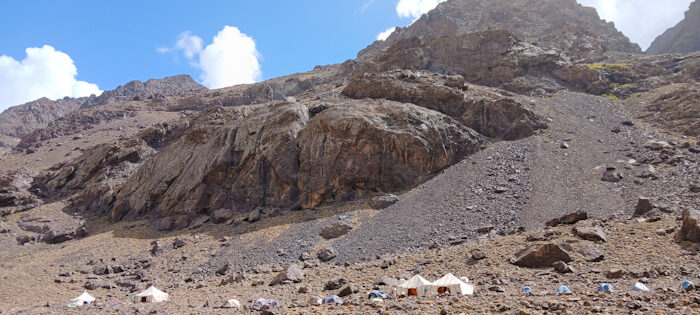
Other useful items
Anker Power Core
Power supply is in short supply on a mountain so a portable charger can be hugely helpful. We opted for Anker Power Core banks which cost £39.99 from Amazon and can recharge your phones several times.
In addition we used these useful solar chargers. They are reasonably heavy but easily hook onto the zip on your day back and recharge using solar energy. They also have an handy small flashlight.
Resealable dry bags
We bought these web-tex resealable bags and waterproof pouches to keep clothes and valuables dry. They were an absolute godsend!
They also make great homes for storing tissue paper and hand sanitisers and you can pop one in a pocket for easy access.
Food
You will burn through calories far quicker than usual and should therefore ensure you have ample snacks to replenish your energy levels.
We took Fuel bars which worked a treat but also have used Rat Race Adventures flapjacks which are equally delicious.
Hamid, our guide, also brought a hearty trail mix which I hugely appreciated on the summit approach.
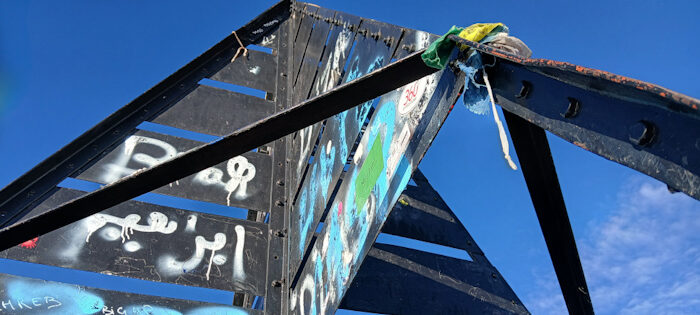
Final thoughts
As this is only a 2 day climb you should not need tons of gear however you should not scrimp on the crucial items such as water supplies, thermal layers and waterproofs.
We saw plenty of tourists who looked like they had booked the trip without much thought and had clearly not come prepared for a 4,000 metre plus mountain.
But, perhaps you have climbed Mount Toubkal and have some other ideas in which case please feel free to share in the comments below. Would love to hear about your experience too.
 From Miles to Smiles Stylish travel for professionals seeking luxury at affordable prices
From Miles to Smiles Stylish travel for professionals seeking luxury at affordable prices
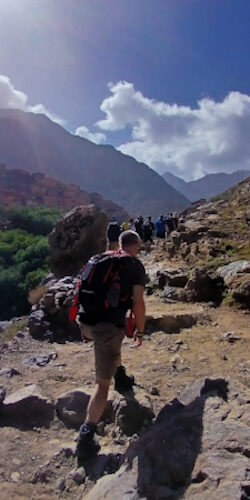

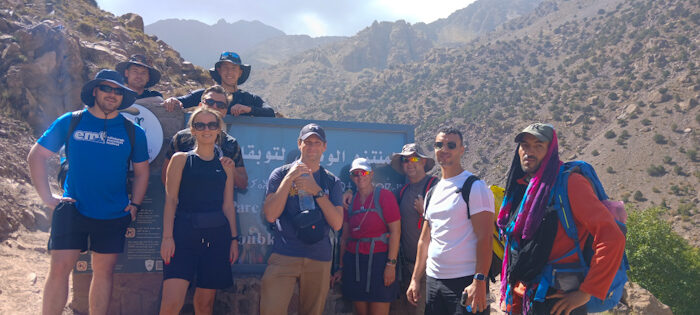
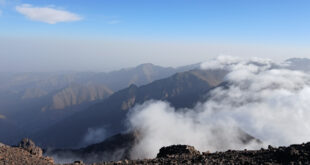
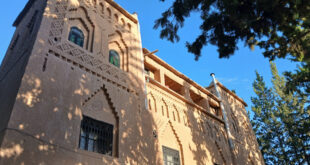
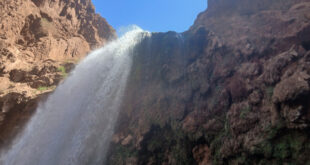
Thank you for sharing this valuable and detailed kit guide for climbing Mount Toubkal. It’s incredibly helpful to have everything laid out so clearly, especially when considering both essential and optional items for the trek. Your advice on choosing quality gear, such as boots and hydration systems, and including the importance of a head torch and safety items like sanitizer is invaluable. I truly appreciate your insights to help others prepare effectively for such a challenging and rewarding adventure!